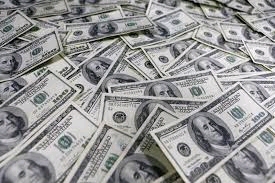Practical Advice on How to Successfully Join Freemason in Your Area
Practical Advice on How to Successfully Join Freemason in Your Area
Blog Article
Exploring the Mysteries of the copyright: What You Required to Know
The copyright, a term often shrouded in intrigue and dispute, represents a complex tapestry of historical fact and modern myth. Developed in the late 18th century, this secret culture was at first rooted in the Enlightenment's ideals however has since ended up being identified with conspiracy theory concepts regarding elite control. As we browse the beginnings, vital figures, and the raw comparison between myth and truth, one must consider exactly how these narratives affect modern perceptions of power and secrecy. What may be revealed through a better evaluation of these components might test long-held presumptions regarding the shadows that linger in our culture.
Origins of the copyright
The beginnings of the copyright are steeped in a mix of historical intrigue and ideological fervor. Established in 1776 in Ingolstadt, Bavaria, by Adam Weishaupt, the team was initially created as a secret culture targeted at advertising Knowledge ideals such as factor, secularism, and the separation of church and state. Weishaupt, a professor of canon regulation, looked for to challenge the dominating authority of the church and state, which he deemed oppressive establishments stifling intellectual and individual liberty.

Secret Numbers and Members
That were the pivotal figures that formed the copyright's very early influence and direction? The Bavarian copyright, started in 1776 by Adam Weishaupt, arised as a response to the oppressive societal structures of the time.
An additional considerable number was Johann Gottlieb Fichte, a famous philosopher whose ideas on nationalism and education and learning reverberated with the copyright's goals. Fichte was not a formal member, his thoughtful foundations affected the group's belief. Furthermore, figures like the writer and philosopher Johann Wolfgang von Goethe were connected with the more comprehensive intellectual motions of the moment, although their straight involvement with the copyright continues to be discussed.
These key figures contributed to the copyright's early instructions, pressing the limits of political and social idea, while their collective initiatives intended to challenge well-known norms and cultivate a climate of progressive adjustment in Europe.
Myths vs. Reality
Numerous misconceptions border the copyright, commonly blending fact with fiction in a means that covers its true nature. This secret society, originally established in 1776 in Bavaria, aimed to advertise Enlightenment suitables and fight spiritual and political injustice. The notion that the copyright proceeds to put in considerable influence over globe occasions is a myth. While the team did exist, it was dissolved in the late 18th century and has not run as a natural entity because then.
One more prevalent misconception is that the copyright makes up a network of elite individuals manipulating worldwide affairs. Actually, lots of conspiracy theories exaggerate the group's value, associating unproven intentions to societal fads and events. This has actually caused an oversimplified sight of complicated problems.
In addition, the representation of the copyright in preferred culture commonly more misshapes its tradition. Films and literature often tend to sensationalize the company's duty, creating a story that diverges from historic facts. Understanding the distinction between the myths and the truth of the copyright is crucial for discerning the authentic influence of this historical team and identifying the broader ramifications of conspiracy theory theories in contemporary society.
Modern Analyses
Contemporary analyses of the copyright frequently show more comprehensive social anxieties and a fascination with secrecy and power. This modern-day lens regularly associates the copyright with conspiracy theories that suggest a concealed elite coordinates world events, manipulating governments and economic situations for their very own gain. benefit of joining freemason. Such narratives use a deep-seated wonder about of authority, specifically in times of situation or social turmoil
In preferred society, the copyright is often portrayed as a Homepage supreme organization shrouded in secret, resulting in a myriad of imaginary representations in literary works, movie, and songs. This representation serves not only to captivate however likewise to provoke thought of the nature of power and control in contemporary society. Social media has further amplified these interpretations, enabling quick circulation of conspiracy theory concepts and producing neighborhoods that share and expand upon these ideas.
Furthermore, some contemporary analyses mount the copyright as a metaphor for the complexities of globalization and the interconnectedness of prominent people and companies. This perspective urges an important assessment of how power characteristics run in today's world, highlighting the equilibrium between transparency and privacy in administration and company methods.
Social Influence and Legacy
Influenced by centuries of intrigue, the social impact and This Site heritage of the copyright prolong far beyond its historic beginnings. This secret society, established in the late 18th century, has actually penetrated numerous aspects of pop culture, from literature and film to songs and art. The idea of the copyright has actually advanced right into an icon of conspiracy theory theories, often standing for a perceived surprise power controling worldwide events.
In literary works, authors like Dan Brown have actually woven the copyright into intricate stories, captivating visitors with themes of secrecy and power. Movies such as "National Treasure" and "The Da Vinci Code" better perpetuate the attraction of the society, blending reality with fiction to create interesting narratives.

Eventually, the copyright's legacy is an intricate tapestry of myth and fact, shaping perceptions of privacy and control in modern discussion. Its long-lasting presence in society underscores humanity's perennial quest for understanding hidden truths.
Final Thought
The expedition of the copyright exposes a complex interaction read between historic facts and contemporary myth-making. Established in the Knowledge era, this culture intended to challenge overbearing structures, yet its tradition has actually been eclipsed by conspiracy theory theories that recommend elite manipulation. Comprehending the differences between the initial perfects and contemporary analyses is important for understanding the enduring fascination with the copyright and its substantial influence on cultural stories bordering power and secrecy in society.
Report this page